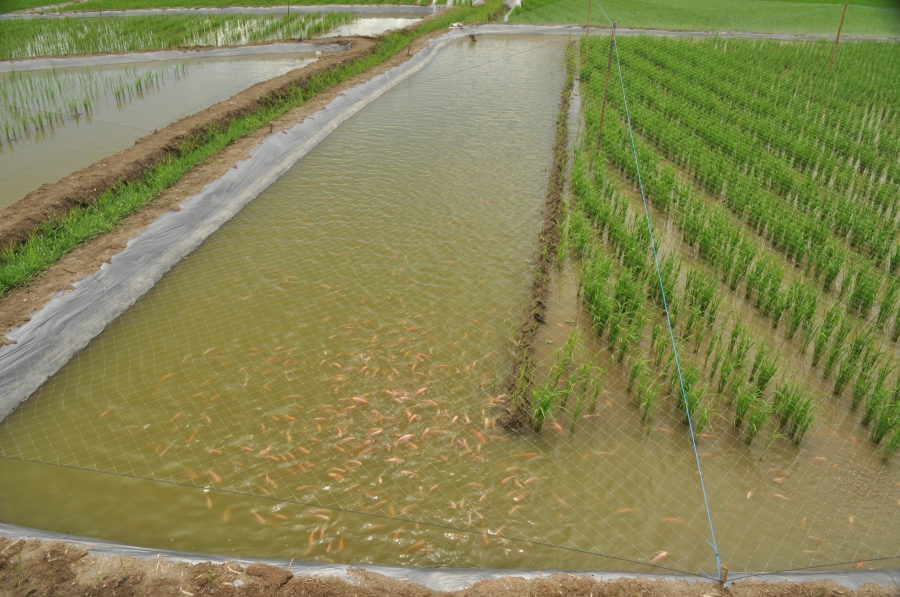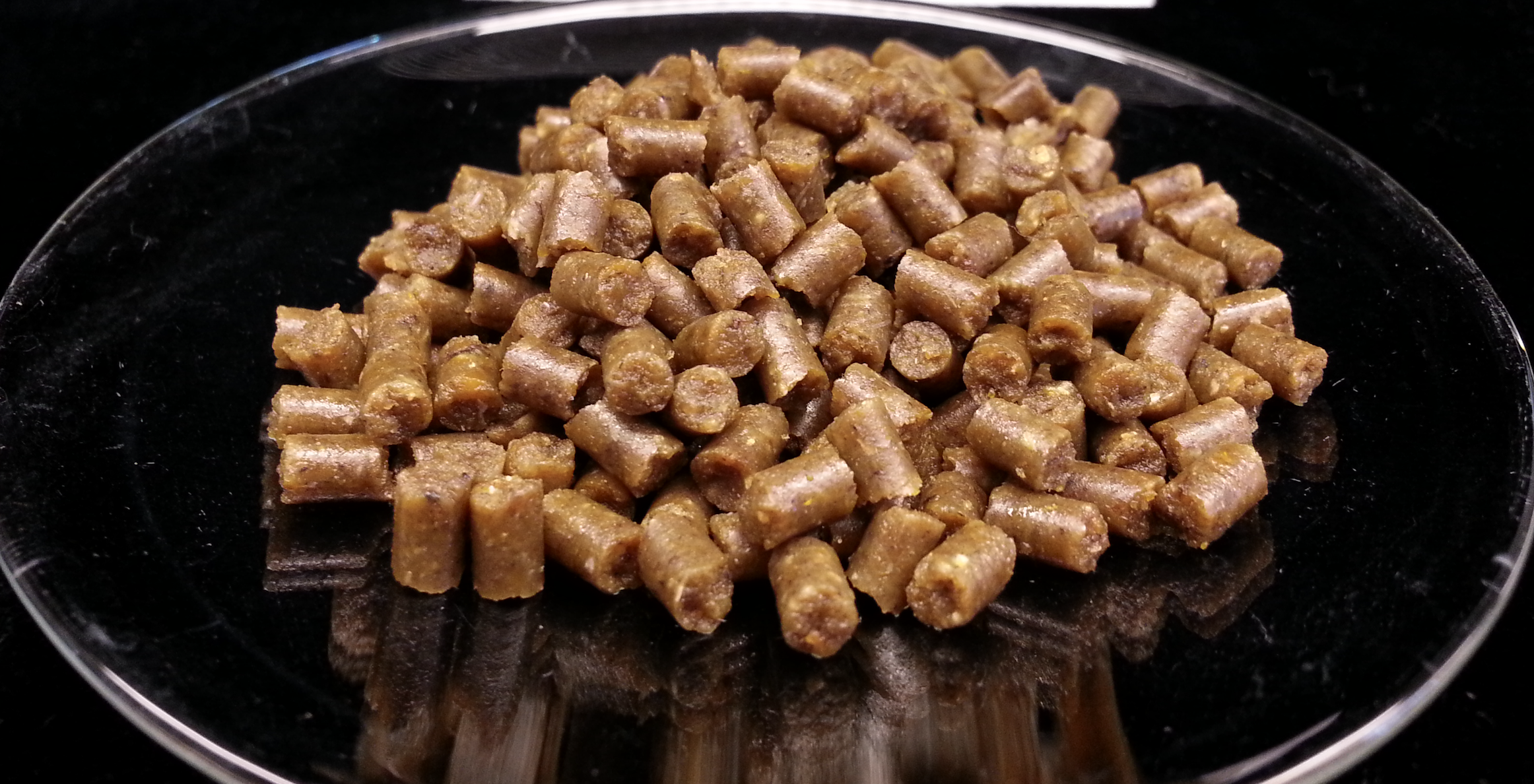
Fish for all
Seeking sustainable aquaculture via fish-free feeds
Aquaculture is a booming business. In 2014, for the first time in modern history, people ate more aquaculture-produced seafood—roughly 74 million tonnes—than seafood harvested from capture fisheries. Due to increasing demand for seafood products and depleted wild fish stocks, farmed seafood has become the world’s fastest growing food sector. And as our global population increases, so will our dependence on aquaculture to feed a world filled with billions more hungry people.

But farmed seafood faces the same long-term sustainability problem as capture fisheries: dwindling stocks of wild fish. Fish farming operations depend on smaller wild fish, like anchovies, sardines, and mackerel, to feed the larger fish that end up on our dinner plates. These smaller species—called “forage fish”—live lower on the food chain where they provide an important base of the marine food web, critically supporting everything from larger fish to marine mammals and seabirds. According to a 2017 report published in the journal Fish and Fisheries, of all fish caught in the world, about 20 million tonnes (90% of which could be eaten by humans) are ground up to produce fishmeal and fish oil, primarily to feed farmed fish. At that rate, experts worry that the demand could outstrip the supply as soon as 2037, with additional severe consequences for marine ecosystems that are already threatened. “Is aquaculture really adding to world fish supplies or is it actually helping deplete wild fisheries?” asked food security expert Rosamond Naylor, a professor of Earth system science at Stanford University in Palo Alto.
Humans farm more than 580 species of aquatic animals and plants, everything from fish, oysters, and clams, to shrimp and seaweed. This flourishing enterprise provides roughly 50 percent of the seafood currently consumed by people. In the early 2000s, fishery products were the primary protein source for some 950 million people, a number that is certainly much higher today. Aquaculture is clearly necessary and important to feed populations all over the world. The good news is that, compared to producing beef, pork, and chicken, aquaculture is more efficient and emits the lowest amount of greenhouse gases. But it could and should be better, and that’s the goal of UC Santa Cruz professor of environmental studies Anne Kapuscinski.
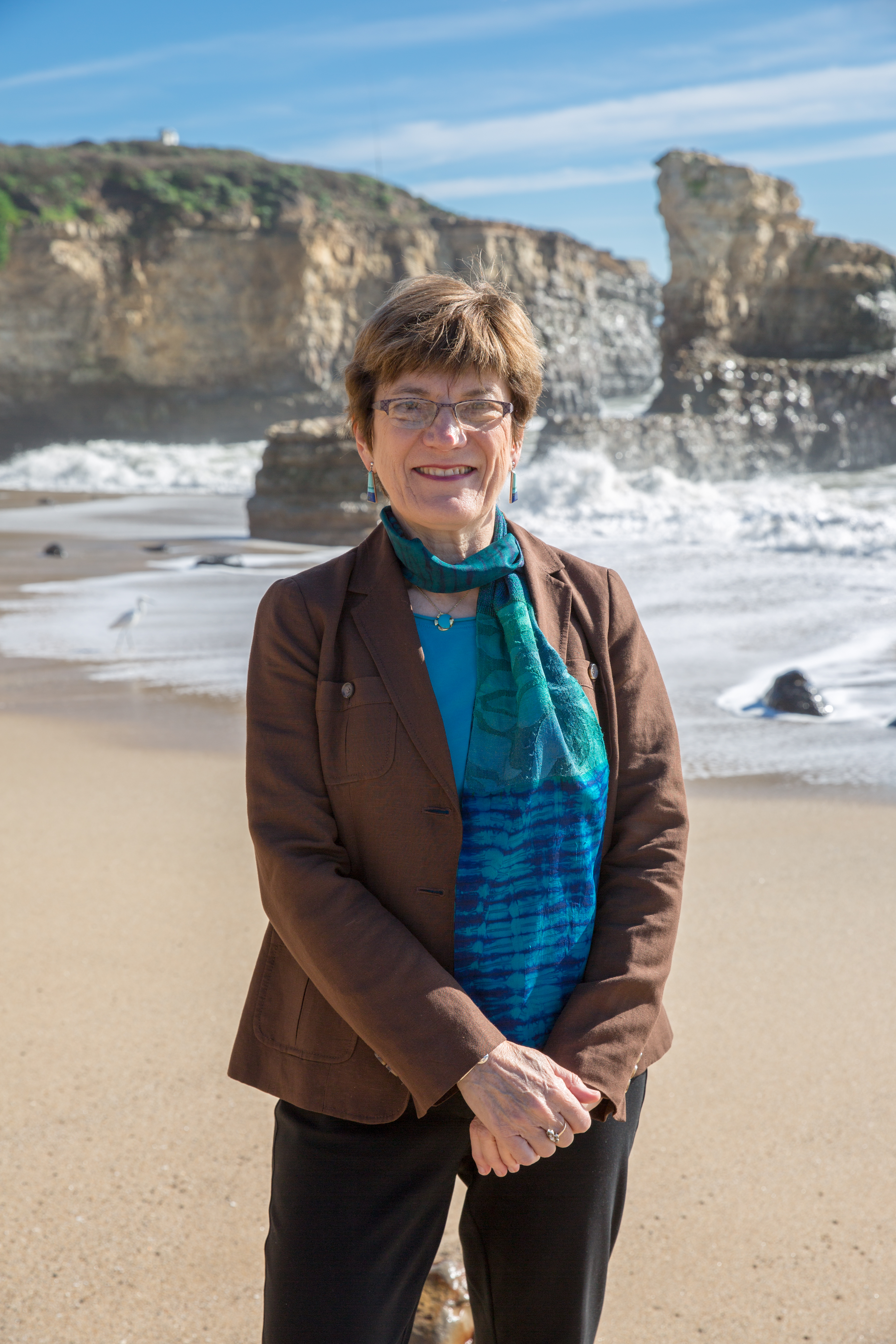
“Aquaculture started over 2,000 years ago in China, and also arose in some other parts of the world. It actually mimicked natural ecosystems in that there wasn’t any waste,” said Kapuscinski. Armed with this knowledge, Kapuscinski wants to steer aquaculture in a more sustainable direction that eliminates the need for wild-caught forage fish and reduces waste. To do that, she’s been experimenting with using microscopic marine algae as the basis for healthy, environmentally-friendly fish feeds that swap out the fishmeal and fish oil.
Kapuscinski’s work to create a green and nutritionally superior aquaculture sector with minimal environmental impact is “valuable and progressive,” said Naylor. There are “real opportunities for improvement,” she said, “and they are right there at UCSC—it’s time to find replacements for wild fishmeal.”
Nutritional nuances
The key to developing a fish-free feed is understanding fish nutrition. You need to achieve the right balance of proteins and fats so the fish grows as well, if not better, than they would on a conventional diet, Kapuscinski said. At least 40 essential nutrients must be included in their diet, so it’s no easy feat.
The menu for most farmed fish currently includes a mix of fishmeal and fish oil. For a carnivorous species like salmon, fishmeal accounts for about 25 percent of their food. Together, these ingredients are chock-full of proteins, amino acids, and two critical omega-3 fatty acids, docosahexaenoic acid (DHA) and eicosapentaenoic acid (EPA). Walk into any vitamin store or vitamin isle and you’ll see myriad jars of fish oil supplements. That’s because research has linked these omega-3s to a variety of human health benefits, including a decreased risk of heart disease. In the wild, the DHA and EPA required by fish come from marine microalgae. Fish and other marine organisms obtain these omega-3s by directly eating marine microalgae, or by eating other animals that have eaten the microalgae.
To develop fish-free fish diets, Kapuscinski closely collaborates with Pallab Sarker, a fish nutrition expert and associate research professor of environmental studies. Their goal is to replace the fish-derived products in fish feed with marine microalgae, which hasn’t been done before. “Microalgae are a particularly good candidate for fish feed because they are at the base of the aquatic food chains,” said Sarker. So far, the researchers’ efforts have focused primarily on Nile tilapia, a freshwater species—Oreochromis niloticus—native to the northern half of Africa and Israel. After Chinese carps, tilapia constitute the second most important group of farmed fish, and the most widely cultivated.
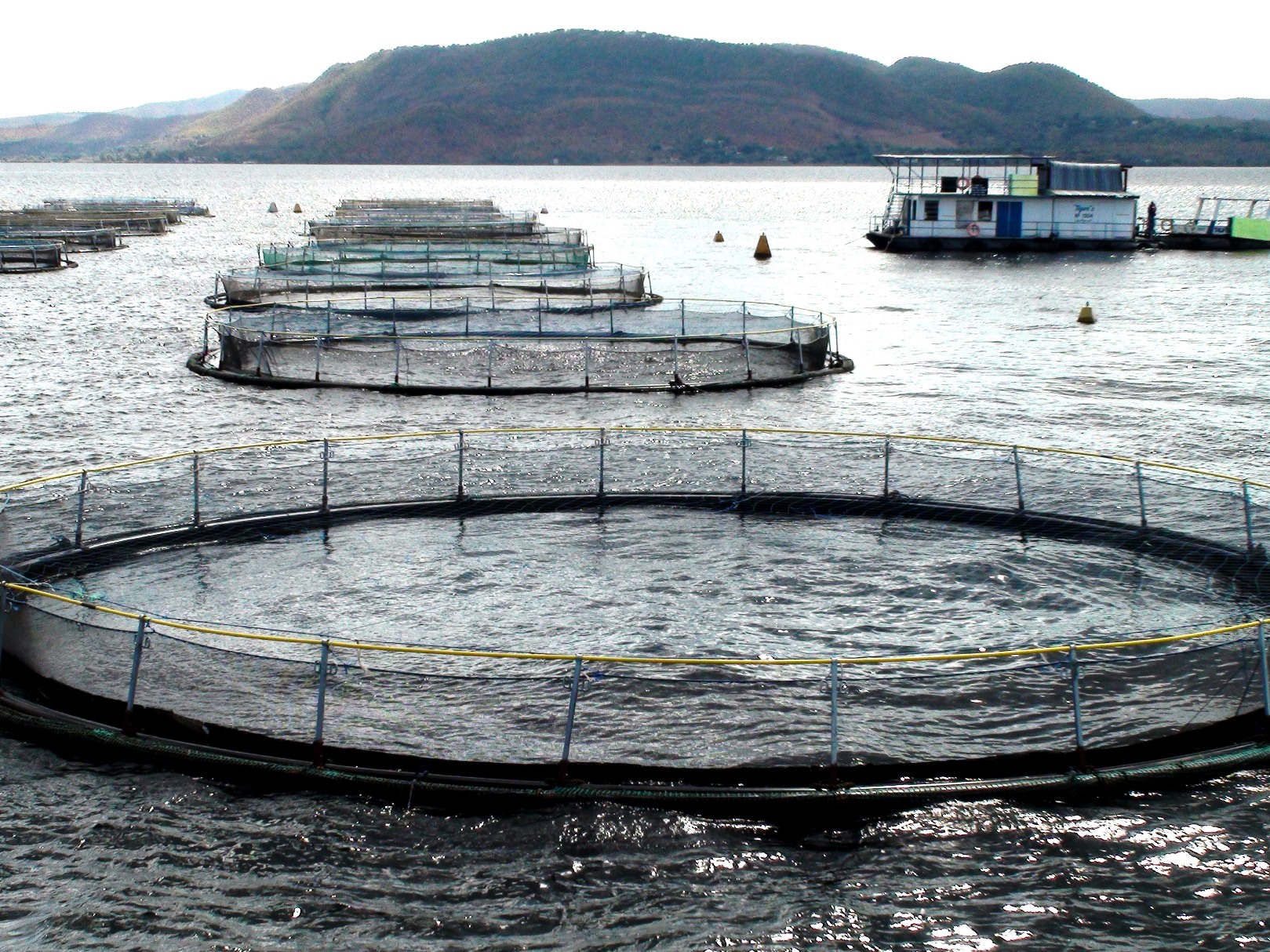
Like that of farmed salmon and trout, the commercial diet of farmed tilapia includes fishmeal and fish oil. However, unlike wild salmon and trout, which are carnivores, wild tilapia occupy a lower level on the food chain and don’t eat fish. They primarily graze on mats of algae and bacteria. Despite this, almost 20 percent of total world production of fishmeal and fish oil from capture fisheries goes to support tilapia farming, said Kapuscinski. “That’s why I started our work with tilapia.”
Hand fed
Kapuscinski and Sarker’s experiments involve feeding tilapia diets with different compositions of fishmeal, fish oil, and algae. The fish are first measured and weighed and then divided randomly into different tanks where they receive one of the test diets. The fish are weighed throughout the studies, and then again at the end, when tissue samples are also taken. The team carefully feed the fish the test feed pellets by hand, three times a day for 12 weeks. “We pay attention to make sure that feed waste is minimized,” said Sarker. “We distribute the feed to the tank very slowly and ensure every pellet has been received by the fish.”
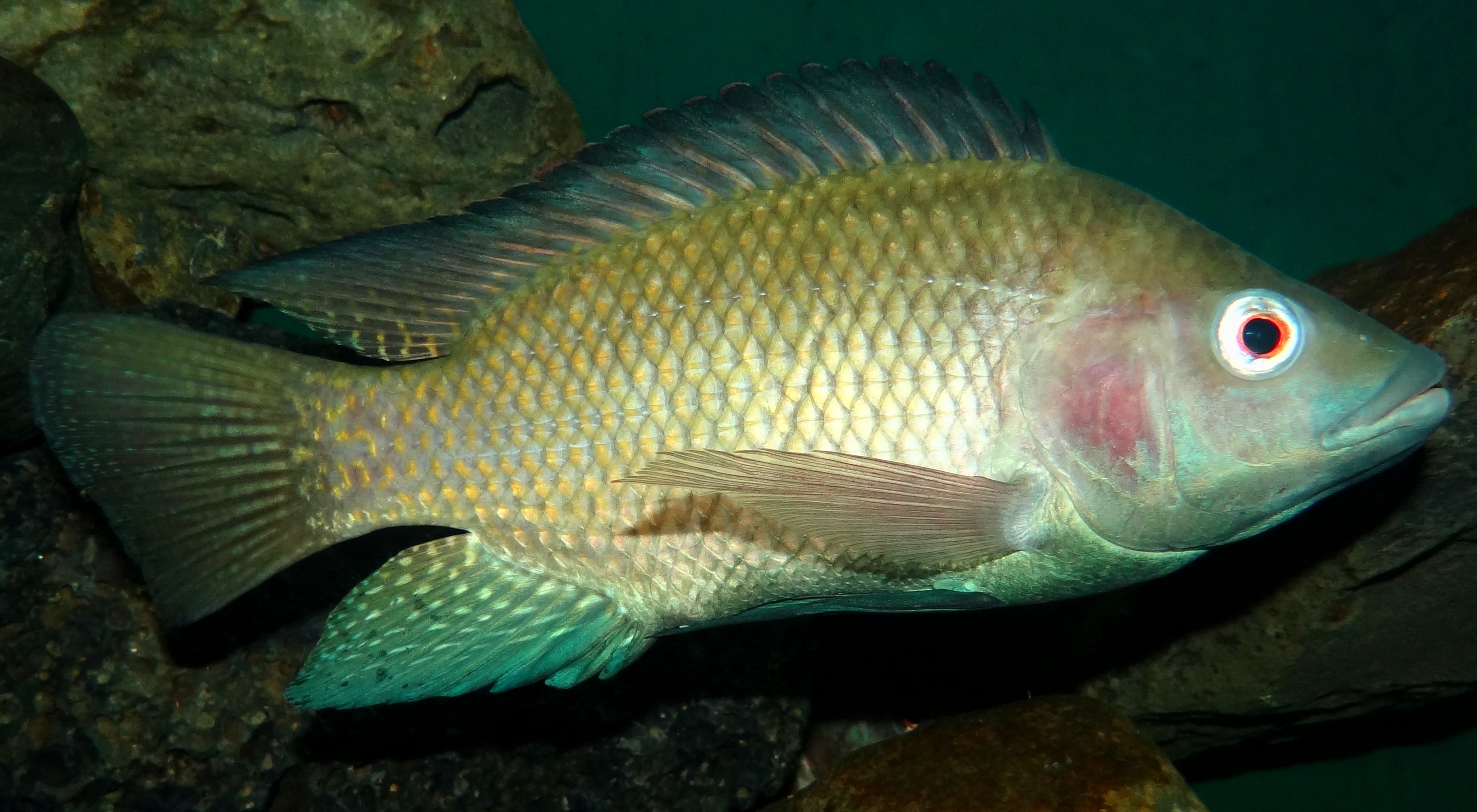
In a study published in PLOS One (July 2018), the researchers fed the tilapia a conventional diet and ones with fishmeal replaced by the microalga Nannochloropsis oculata at 33 percent, 66 percent, and 100 percent levels. The results showed that the protein-rich portion of the microalgae could replace 33 percent of the fishmeal. “We were really excited to find that the microalgae could replace a significant amount of the fishmeal,” Kapuscinski said.
In a more recent study, not yet published, Kapuscinski and Sarker replaced both fishmeal and fish oil with two different species of microalgae. This work showed that the replacement feed produces tilapia better and faster than a conventional diet. In addition to measuring the fish, the team also calculates the “feed conversion ratio” (FCR), an estimate of the amount of feed that actually becomes fish flesh. The lower the FCR the more efficient the feed, and the fish fed the algae diets have a lower FCR. “Farmers keep using the fishmeal and fish oil assuming the tilapia will do best with that,” said Kapuscinski. “But we’ve found that the fishmeal and fish oil aren’t needed. With the two types of marine microalgae together, we get a superior diet.”

Cost cutting
A big concern with using algae for fish feed is its potentially high cost. Companies are already using less-expensive alternatives such as soy, corn, and canola to reduce the fishmeal—which has become more expensive—in their feeds. But these substitutes are not healthy for fish or humans eating the fish, nor are they sustainable solutions. They lack the omega-3s, have lower digestibility, and contain antinutrients, compounds that actually interfere with nutrient absorption. For example, the phosphorous in land-based crops is particularly difficult for fish to digest, said Sarker. Seventy percent of the phosphorous remains undigested, meaning increased pollution from the resulting sewage.
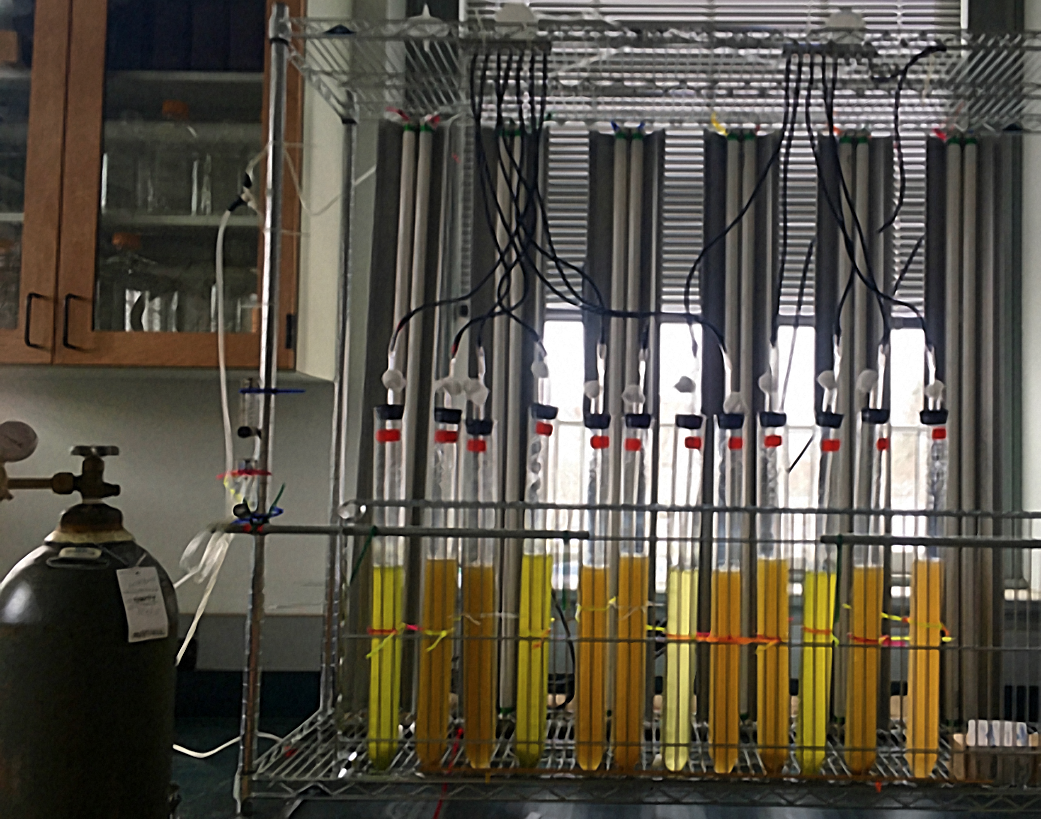
Following the sustainability concept known as circular economy, Kapuscinski and her team plan to keep the price tag of their algae-based feed down by using what would otherwise be a waste product. Instead of making their protein ingredients from whole algae, they’re using “defatted biomass”—the leftovers from whole algae first pressed for other uses in the biofuel and nutraceutical industries. Because this leftover algal meal currently serves no other purpose, the cost is low.
Kapuscinski originally wanted to use the whole algae, but realized that would not work economically, said Martin Sabarsky, CEO of San Diego–based Cellana, and a collaborator with Kapuscinski’s team on one current project. At the end of the day, he said, you can have a perfect fish-free feed, but if farmers can’t afford it, it won’t matter. “Anne is one of the first in this space who thinks deeply about formulation with commercial scaling in mind,” Sabarsky said. “She’s combining what would be a perfect product with what could also work commercially.” Naylor agreed: “Anne and Pallab are rock stars in developing prototype feeds. They are thoughtful both about the ingredient list and the economics. If whole algae was the only revenue stream, you would not be able to commercialize it.”
Salmon in sight
While most of their work to date has focused on tilapia, Kapuscinski and Sarker have set their sights on another goal—to create a fish-free feed for farmed trout, a member of the salmon family. The trout, however, serve as a model for salmon, the ultimate prize. Touted for its health benefits, salmon is one of the highest economic value fishes produced in aquaculture, particularly for wealthy countries, like the United States, Japan, and in Europe. And it’s a big player. Global aquaculture production of salmon is more than 2 million tonnes and gobbles up about 25 percent and 50 percent of the world’s production of fishmeal and fish oil, respectively. China—the world’s largest aquaculture producer—now has plans to farm millions of salmon in giant offshore pens in the middle of Yellow Sea, between mainland China and the Korean Peninsula.
The big difference between tilapia and salmon is that salmon sit higher on the food chain in the wild. Salmon are mid-tier predators that eat small fish and invertebrates, which makes the idea of feeding them a vegan diet somewhat illogical. This makes replacing the fishmeal and fish oil in salmon feed more of a challenge than doing so in feeds for tilapia. But it’s also a challenge from Kapuscinski’s green perspective. “The planet just beautifully produces salmon. If I had a magic wand and could change the world, I would steer us away from raising farmed salmon and instead put all that effort and financial resources into restoring wild salmon populations,” Kapuscinski said. “But I’m also a pragmatist and realize that you can’t just do that.”

Sarker and Kapuscinski’s initial results in reducing the fish products in feeds for rainbow trout are promising. While trout fed a fish-free diet had slightly lower growth rates compared to those fed a conventional diet, the fillets from both contained similar levels of DHA, the important omega-3. “This is an exciting opportunity to potentially achieve fish-free trout feed with improved growth performance and palatability,” said Sarker.
And while the UCSC research focuses on microalgae, it could turn out to be just one part of the optimal fish-free feed solution. It’s possible that future fish-free feeds, whether for tilapia or salmon, could contain a combination of microalgae and other sustainable products like insect meal, bacteria, and yeast. “There are other innovators both in the private sector and the research community, who are trying to develop many other alternative ingredients,” said Kapuscinski, whose team is developing an open-access, decision-support tool to compare alternative and conventional fish-feed ingredients for their nutritional value, environmental impacts, and cost competitiveness.
Wild may still be preferred by those who can afford it, but aquaculture promises to be an important part of our future, thanks to the enlightened efforts of Kapuscinski and others for whom sustainability provides purpose. “Aquaculture can add net value to our food systems,” Kapuscinski said. “It can be regenerative in helping to improve environmental quality, but it needs to be done in a circular economy way. We need to think mindfully about how to link aquaculture with other production systems, to recycle and reuse nutrients and material.”
